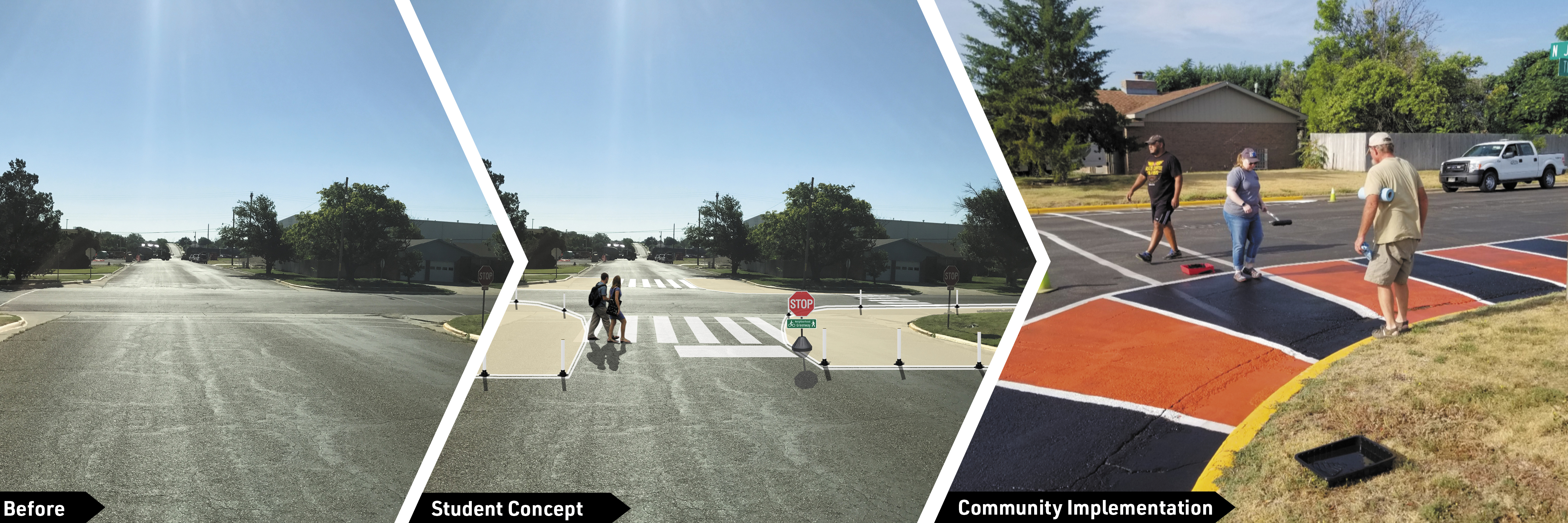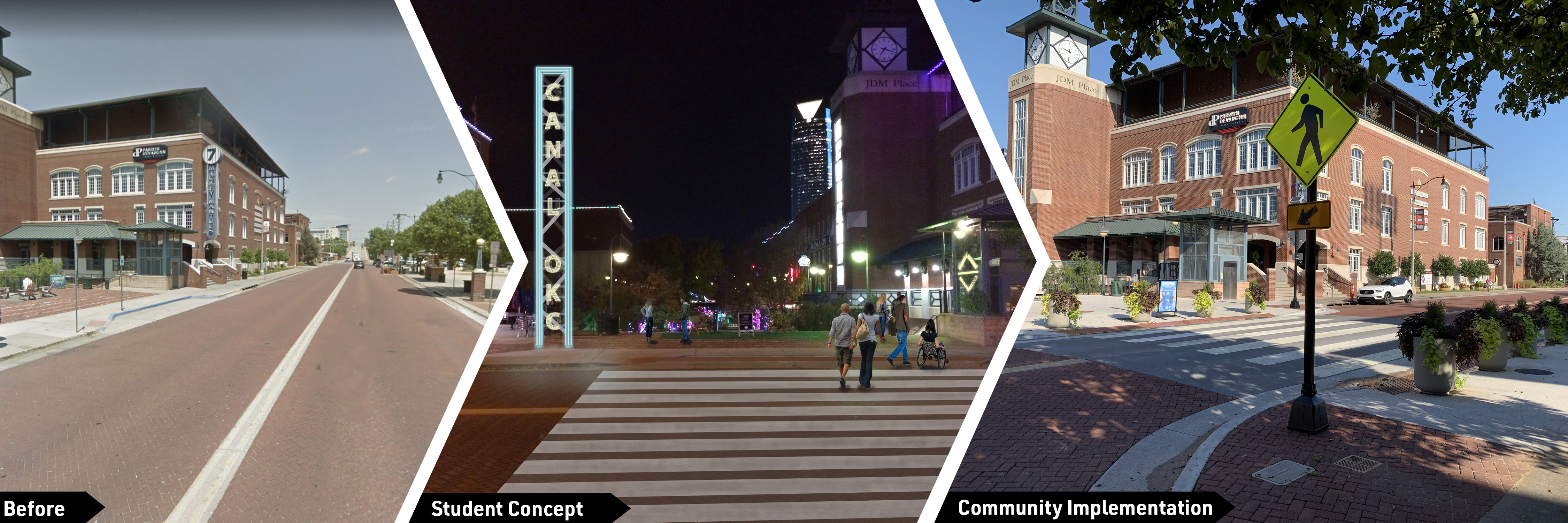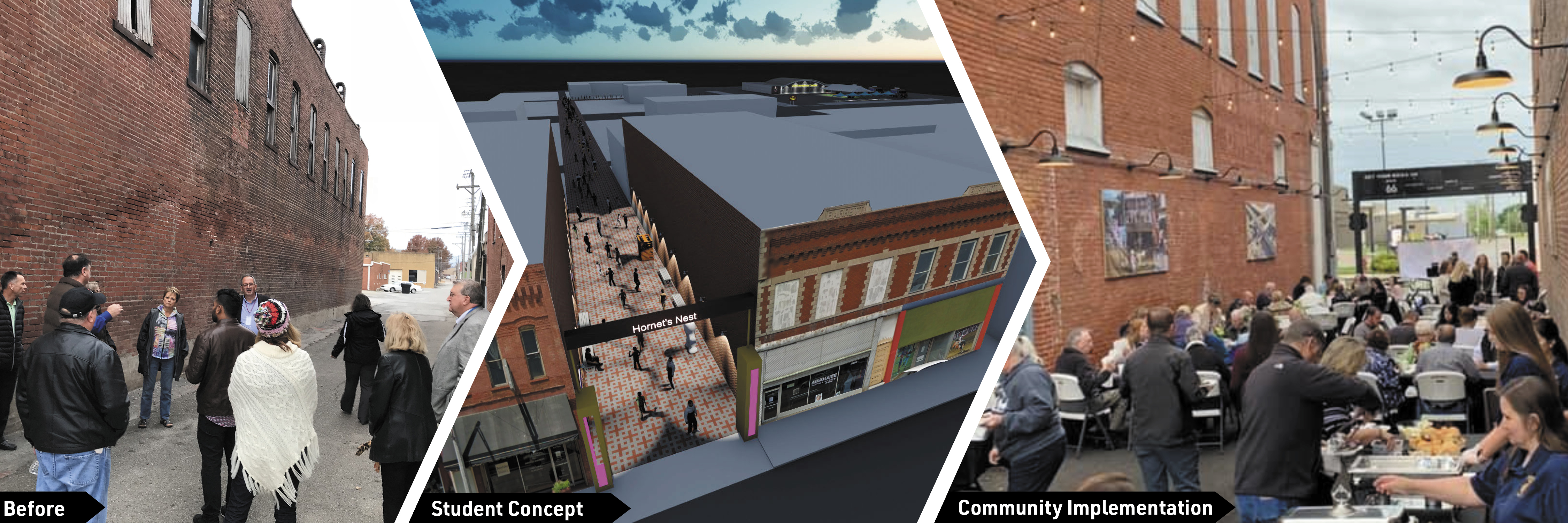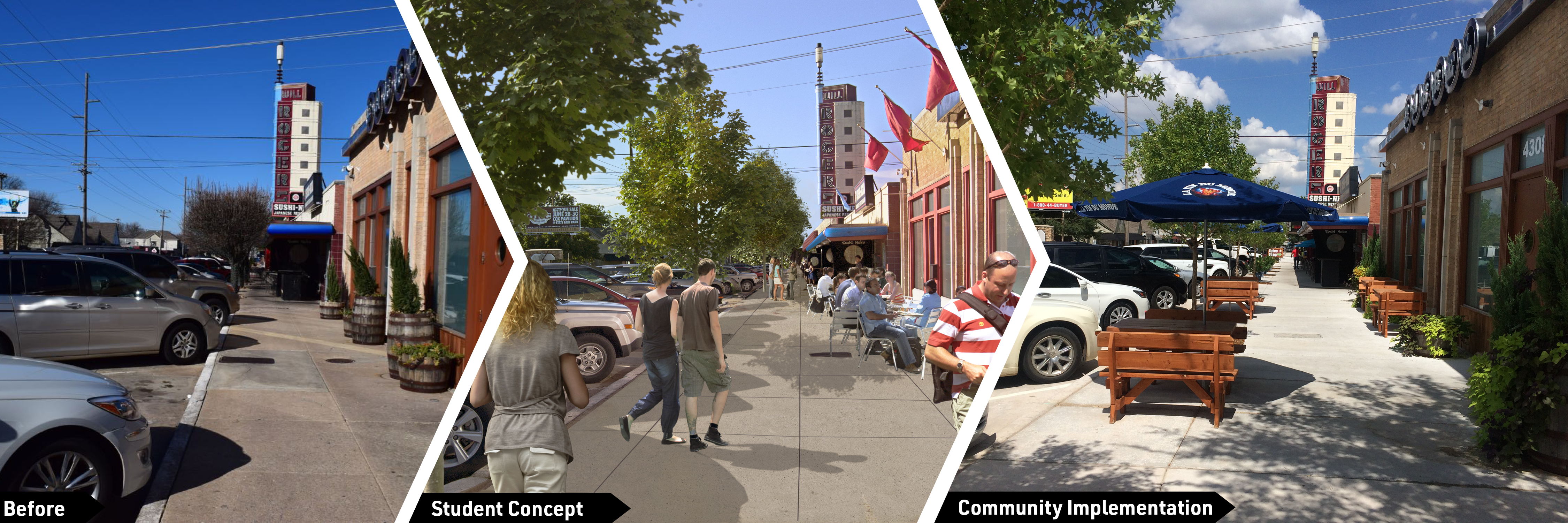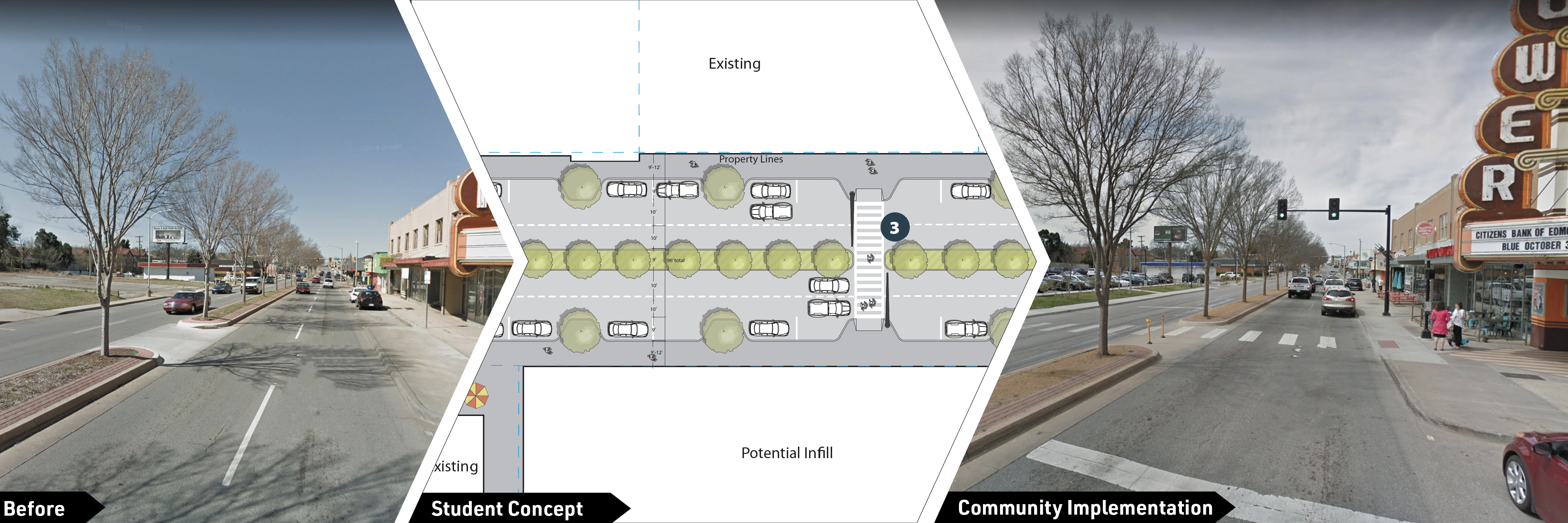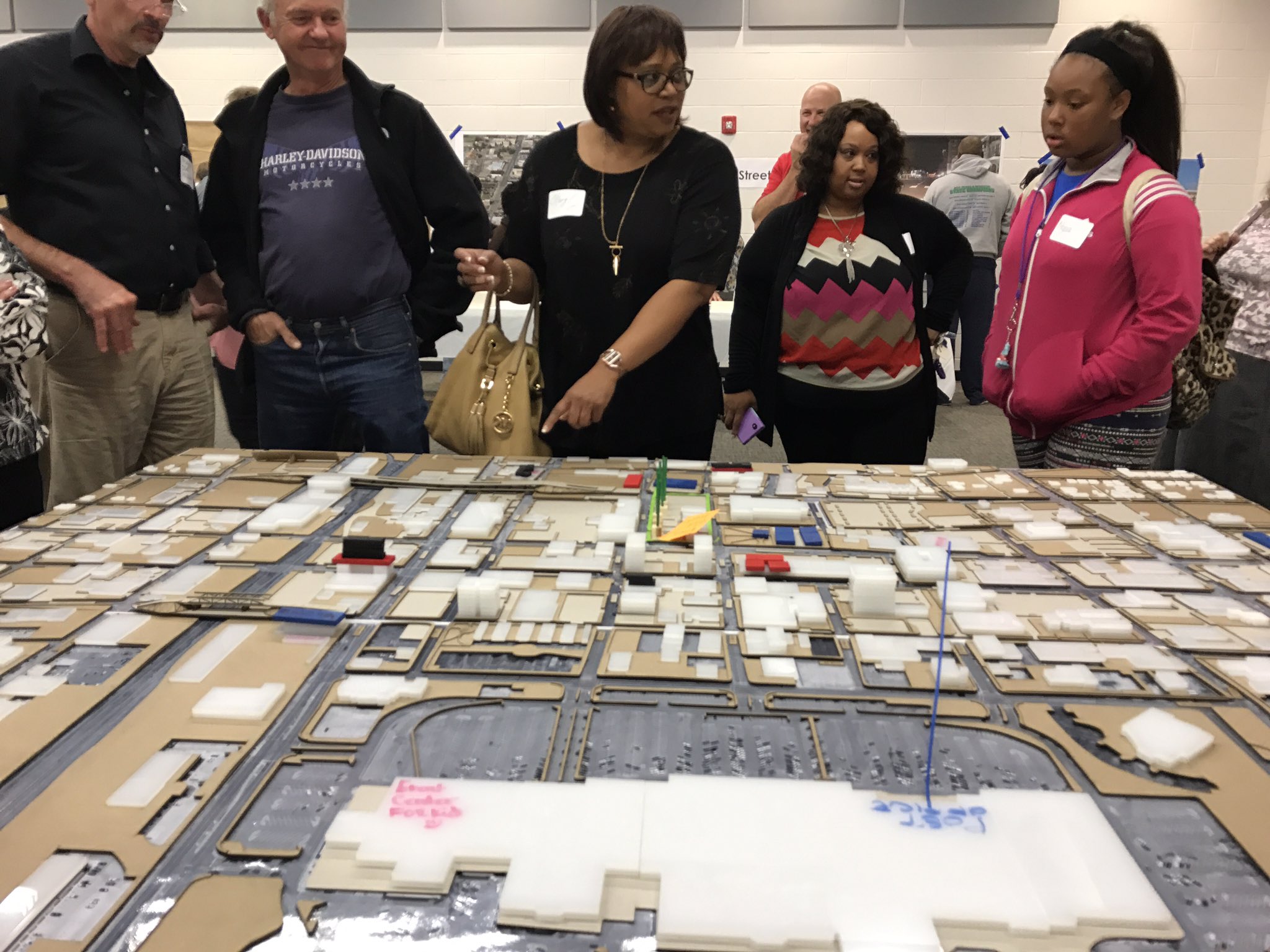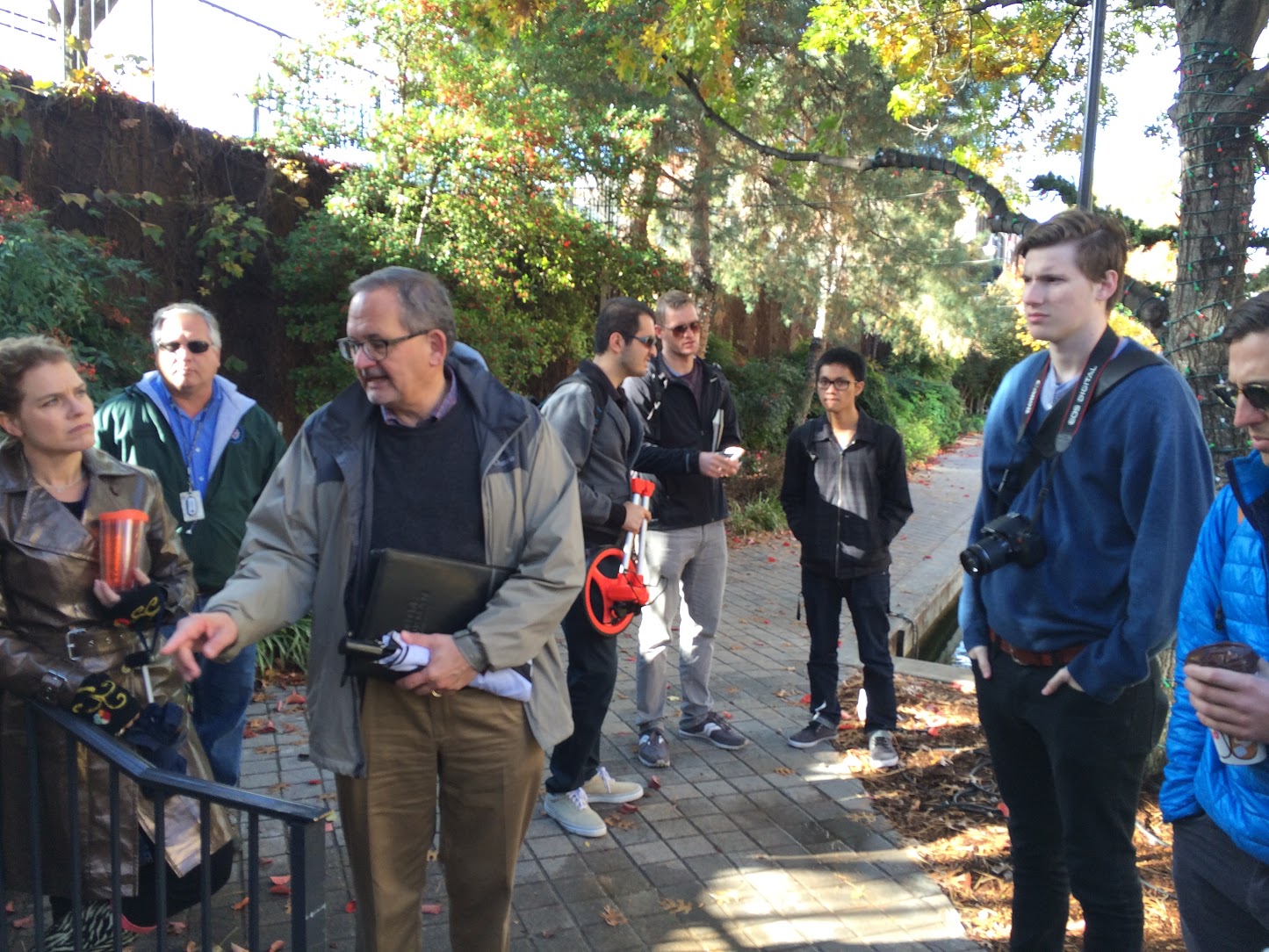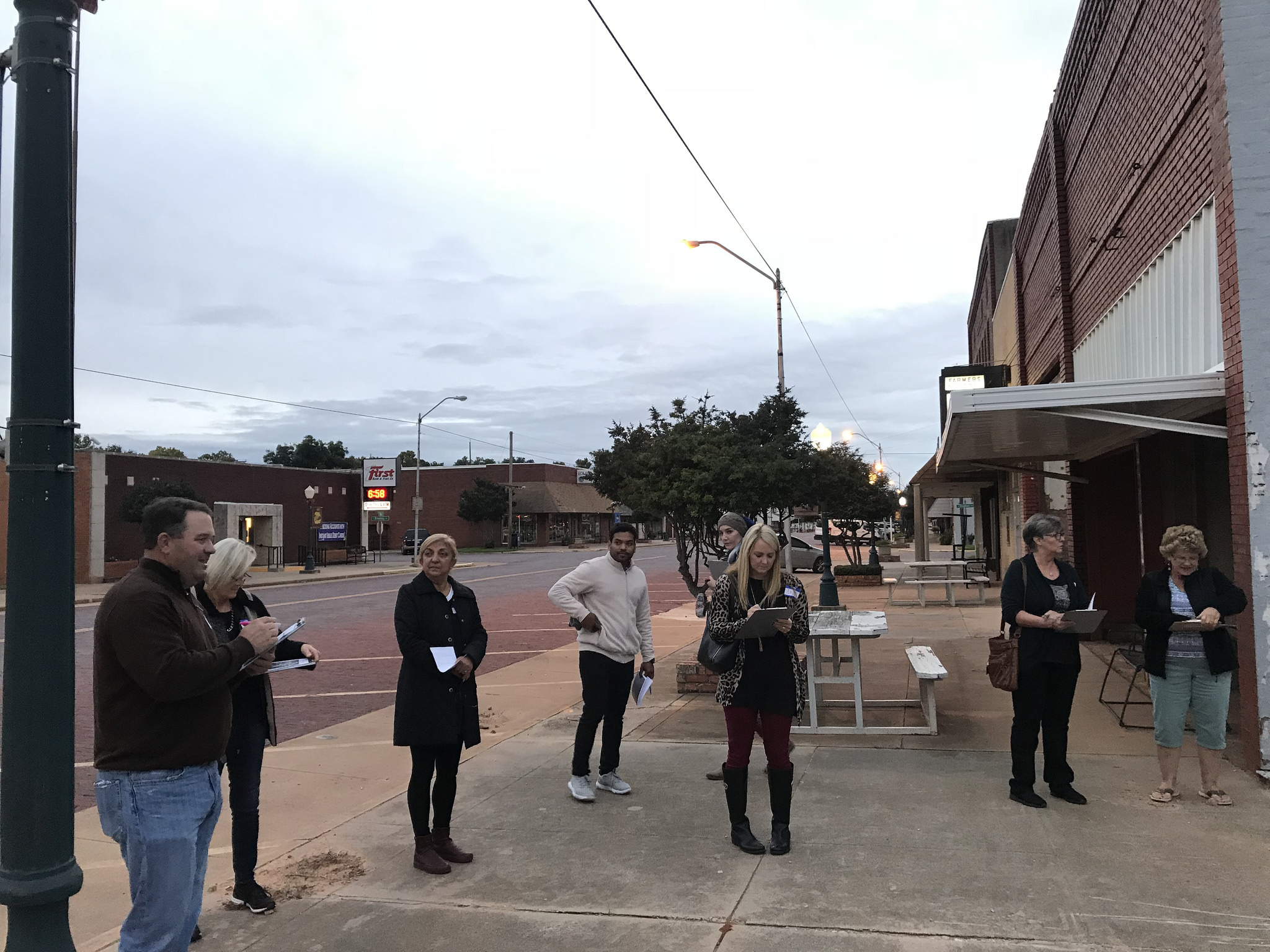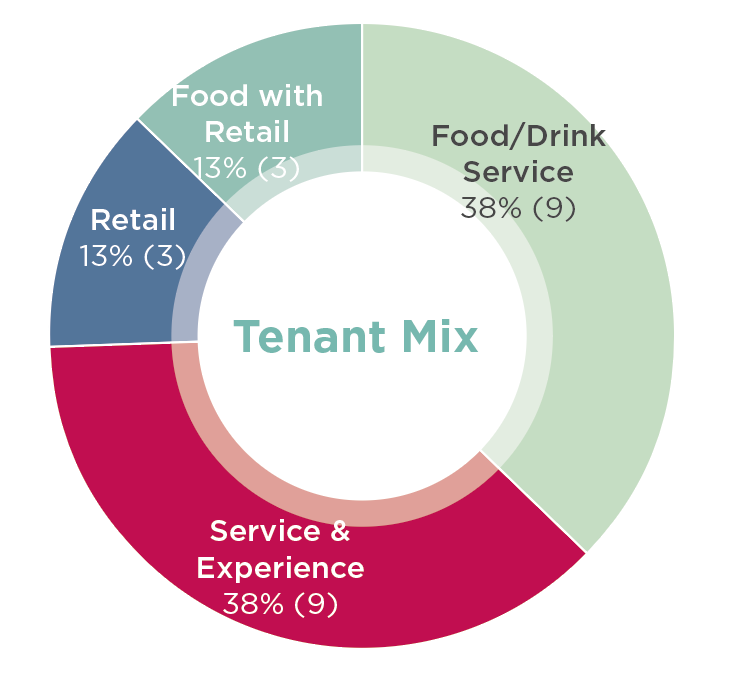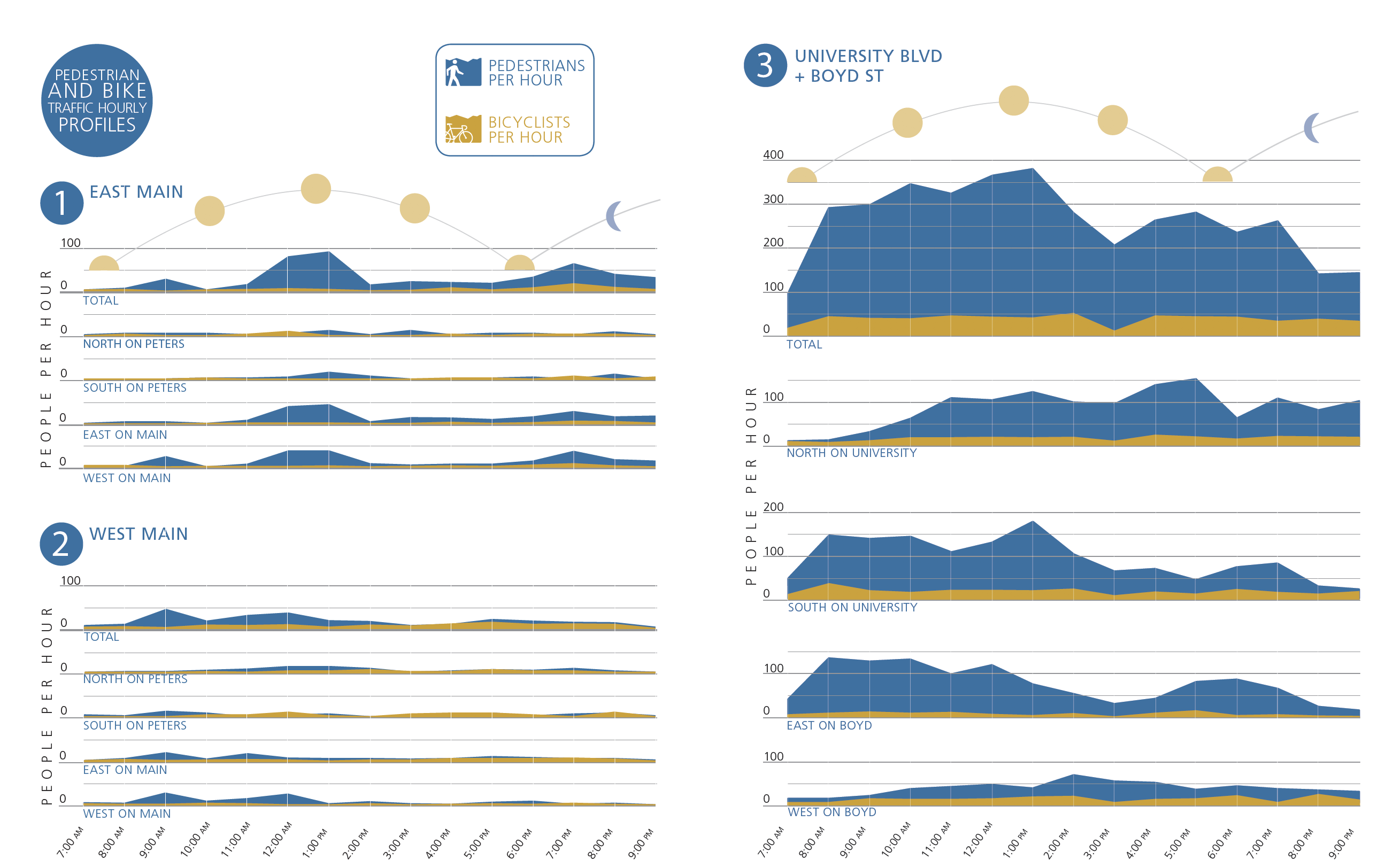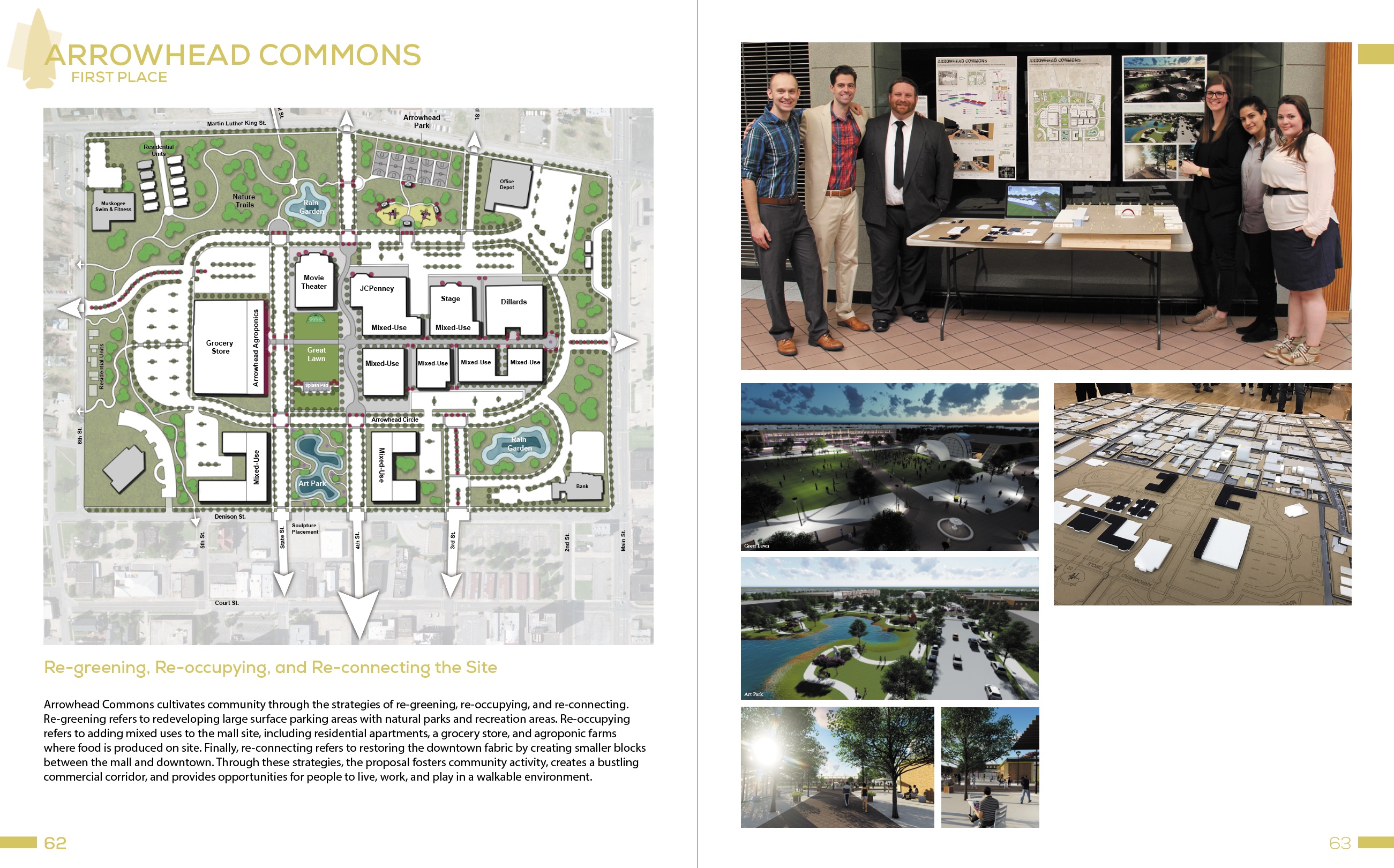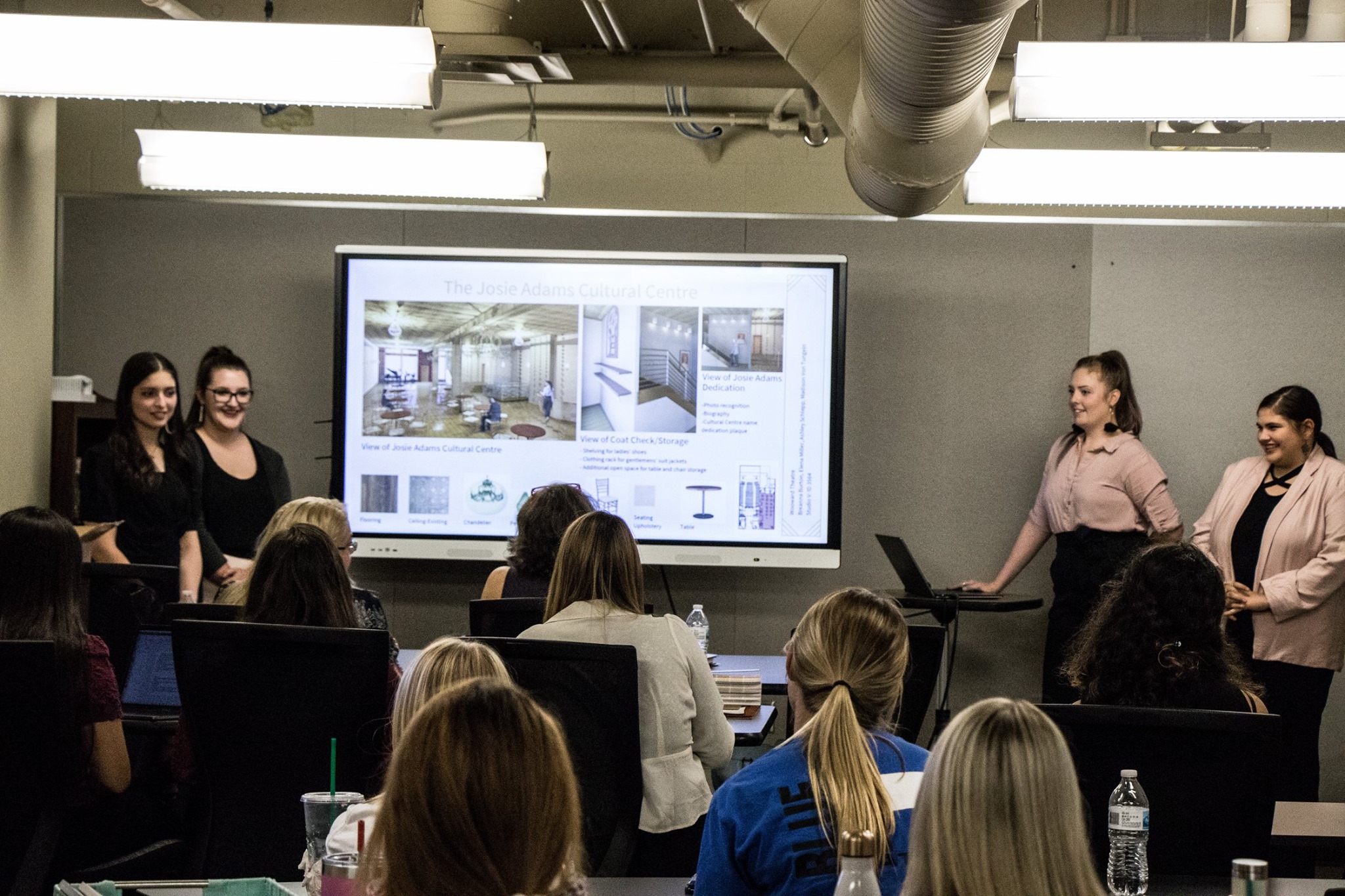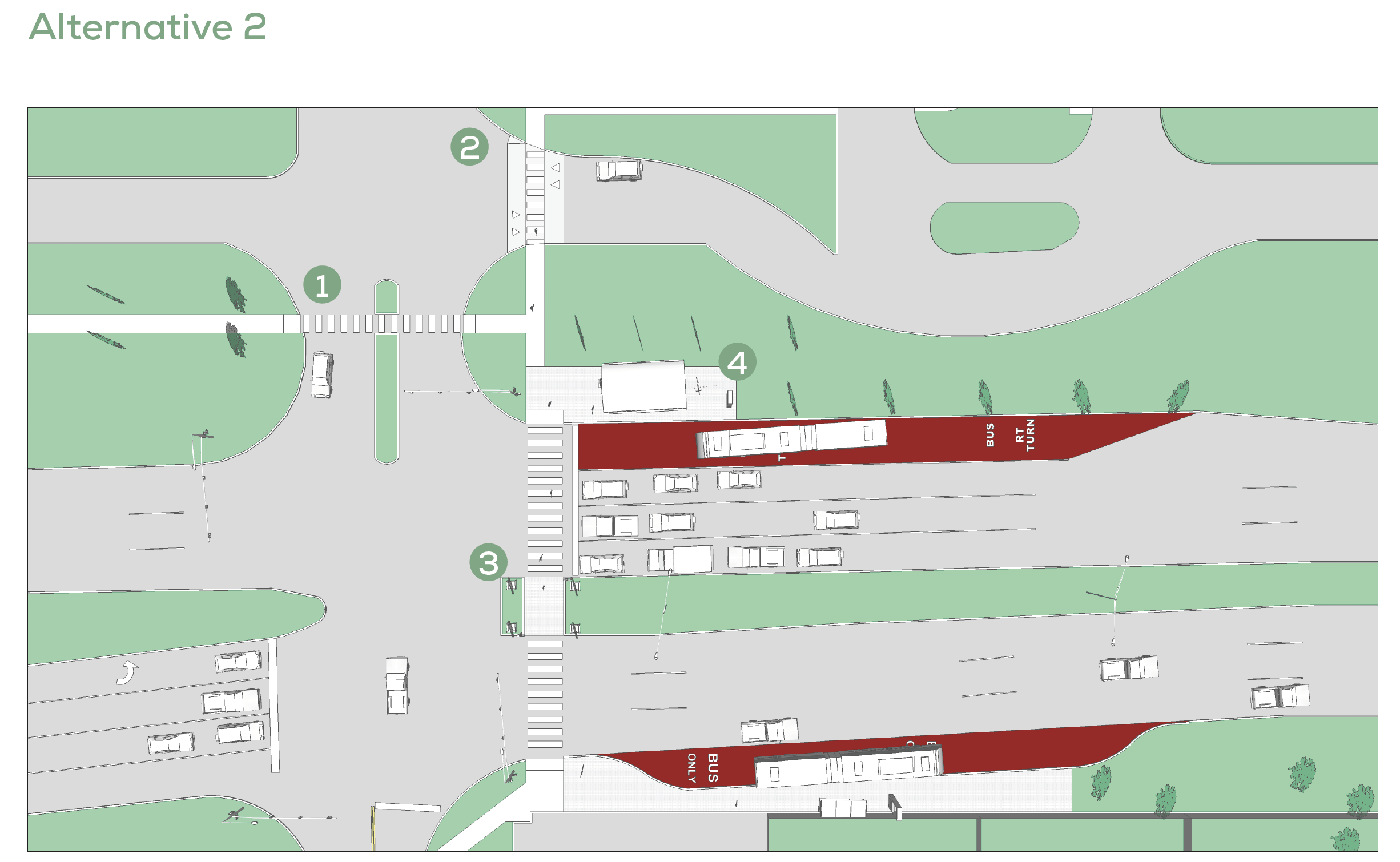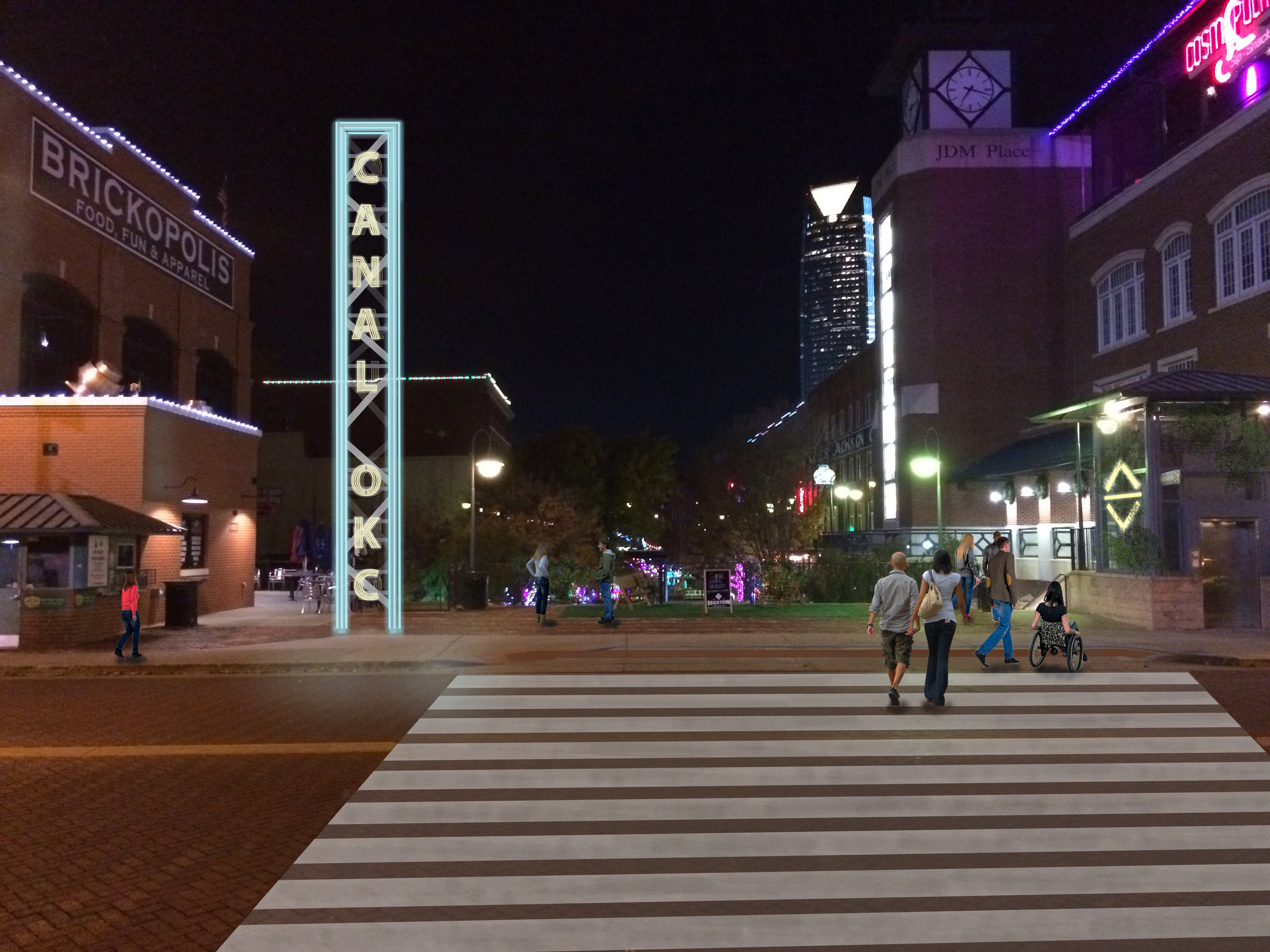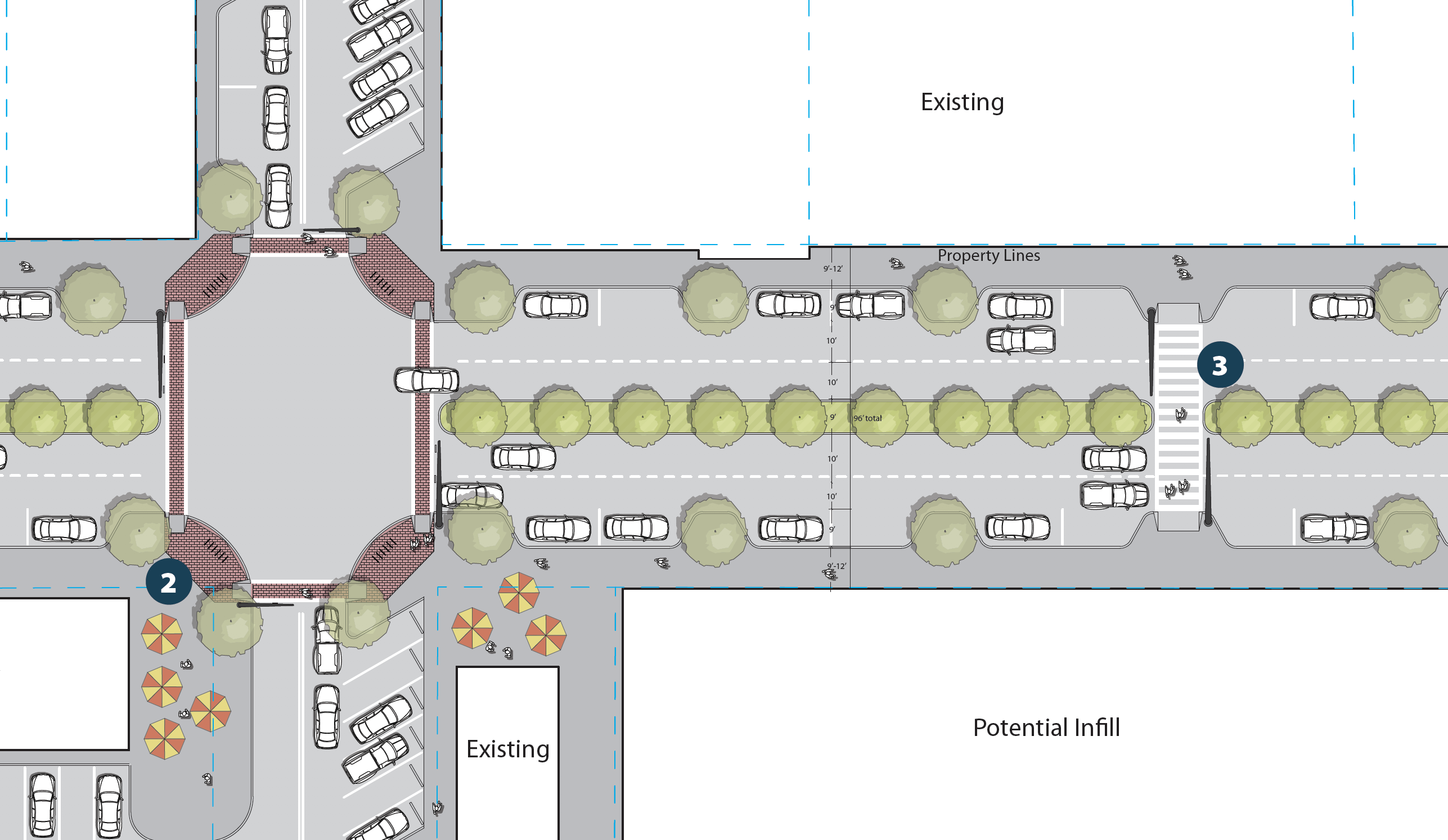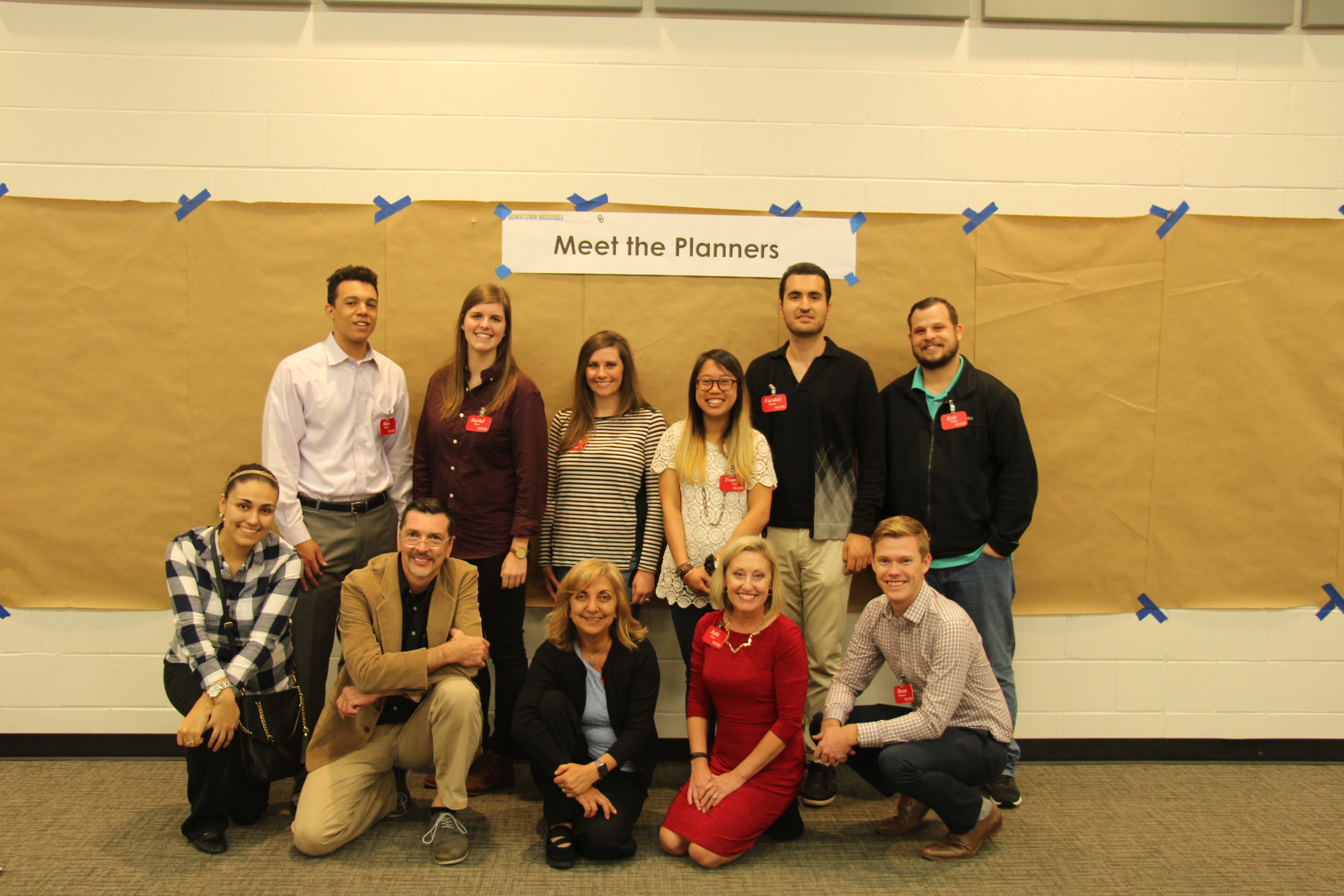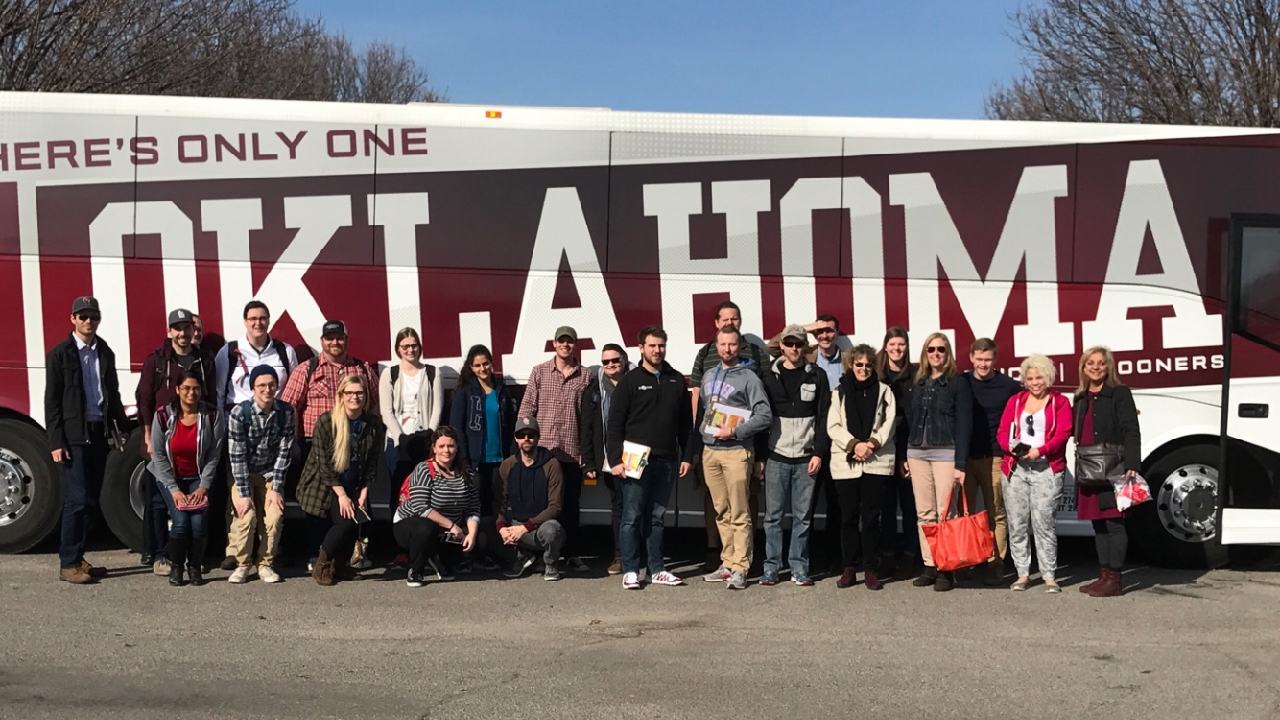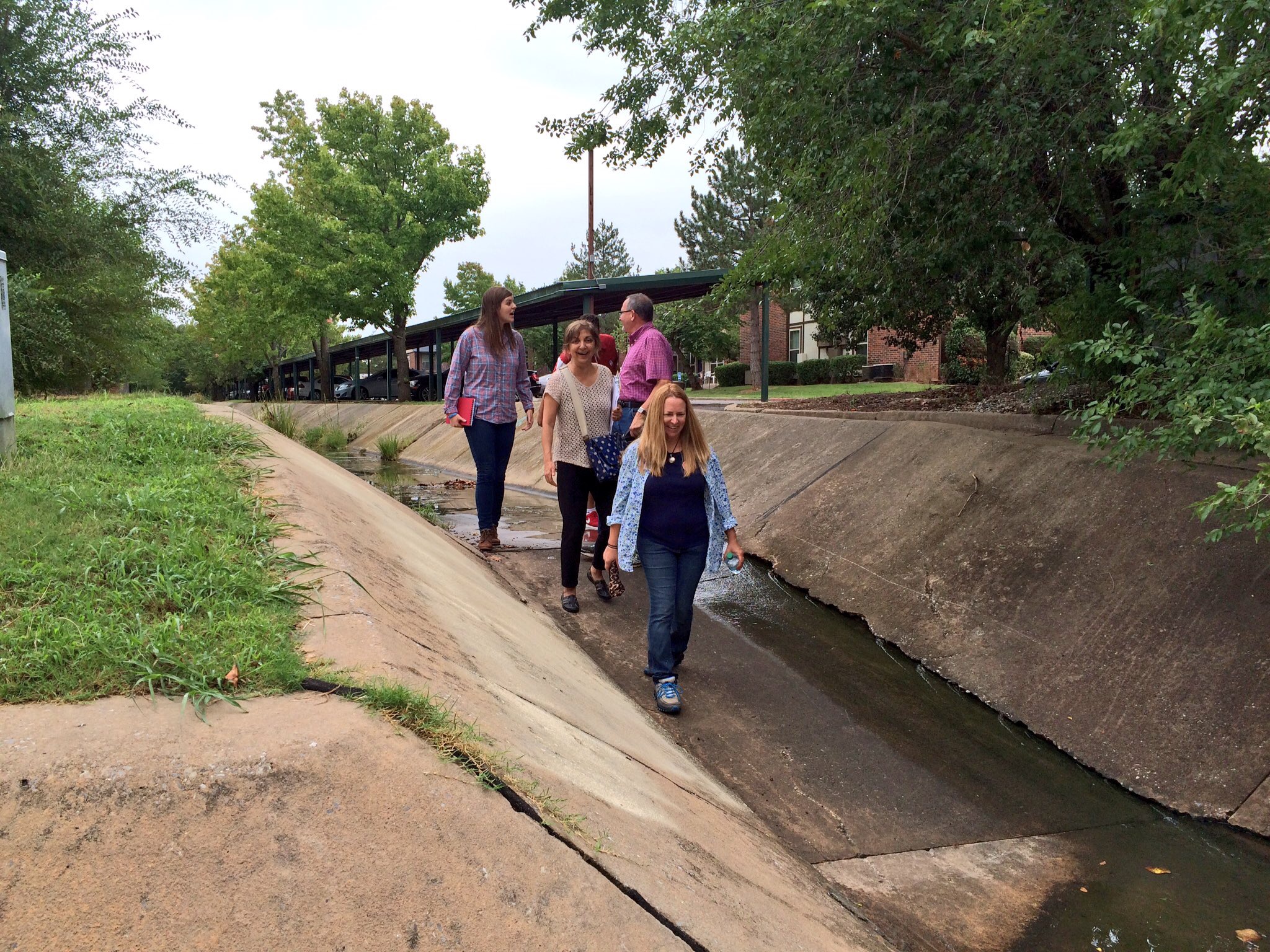Community Assistance Projects with IQC
How can we plan and design our communities in a way that promotes health, economic development, celebrates culture, and strengthens community well-being?
The IQC works in partnership with local leaders across the state of Oklahoma. We encourage municipalities, organizations, and community groups to apply for assistance with projects. Through these partnerships, communities become laboratories for interdisciplinary teams of students from the Gibbs College of Architecture to develop and apply their skills.
Since 2011, we have completed 112 projects while involving over 825 students by partnering with communities and non-profit organizations across 60 counties and securing external funding to support our work across the state. Project topics have included neighborhood planning, walkability, street design and safety, parking inventories, public space design, interior design, heritage conservation, and more. Check out the Community Assistance Project Library for dozens of examples.
Both the university and community benefit from these partnerships. Community partners provide a real-world challenge and context that helps our students learn to apply the skills and knowledge they are learning in the classroom. In return, our community partners benefit by getting ideas, plans, and drawings that can help them get started on local solutions for pressing challenges.
2025-2026 Request for Proposals Timeline
- March 31st: RFP opens
- May 15th: Extended proposal deadline
- May-June: Project interviews and selection
- Fall 2025 – Spring 2026: Project collaborations
Submit a Proposal
Option 1: Fill out an online proposal form.
Option 2: Download and fill out a Word document form and submit to [email protected].
Once your proposal is submitted, an IQC team member will contact you as updates become available. Please reach out via e-mail at [email protected] with any questions.
Program Supporters
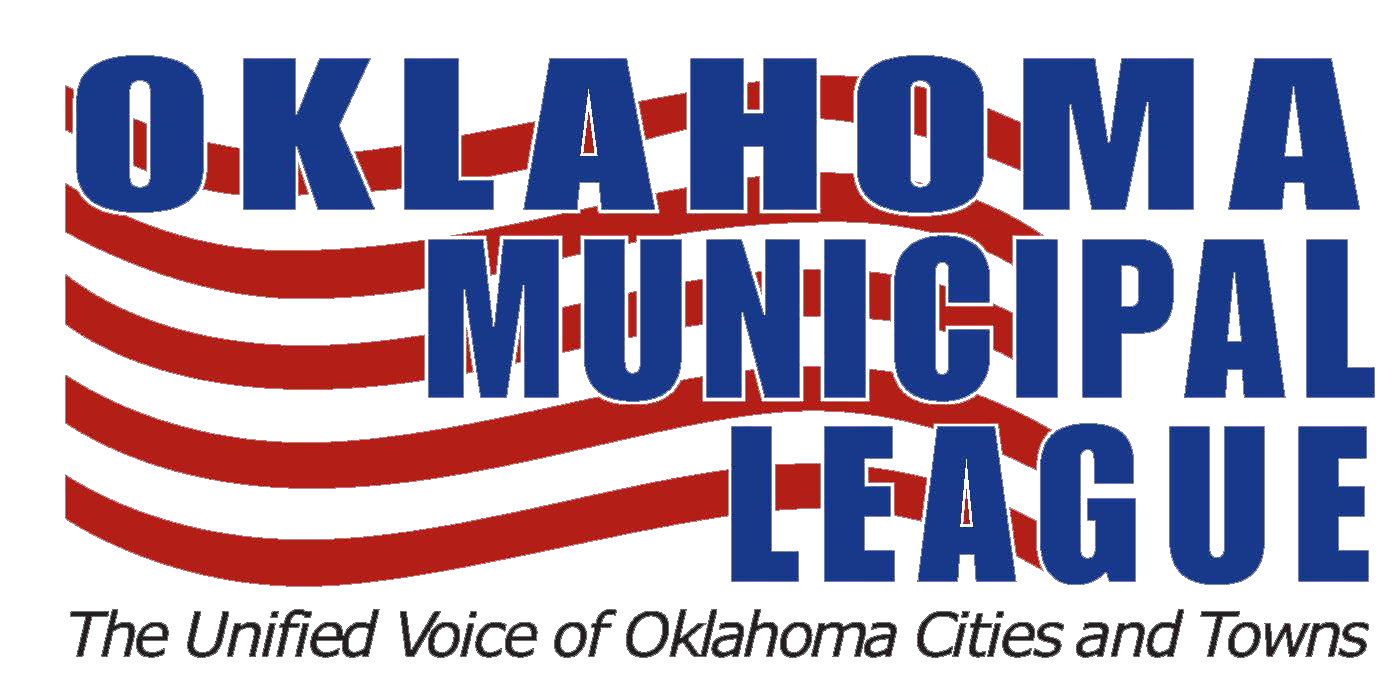
How it Works

Step 1: Community Proposes a Project
At the IQC, we believe that the community is the expert when it comes to local challenges and opportunities. We seek to serve and strengthen Oklahoma’s towns and cities while educating the next generation of Oklahoma’s leaders. All of our projects seek to engage a broad variety of community stakeholders and residents to understand and support their ideas and vision for their community. We collaborate with faculty and students from the University of Oklahoma, as well as cutting-edge practitioners from around the world, to enhance our understanding of the built environment’s influence on quality of life.
Through the IQC’s projects with communities and civic leaders, our team helps citizens reshape their towns and cities in ways that improve our state’s social ties, environment, and economy.
Step 2: IQC Team Selects Projects
Through a competitive process, our assesses each proposal to determine which projects best align with our expertise, values, and capacity for the school year. Our students and professionals come from all over the state, nation, and world. Students are studying all aspects of the built environment through interdisciplinary programs from the details of interior design to the regional picture of city planning. They look at communities with fresh eyes and often see new possibilities.
Step 3: Refine Scope of Work
We work with selected projects by centering their priorities and goals to inform the project’s scope and final deliverables. Through curated, interactive activities, research, and engaging conversations, the IQC collaborates with communities to ensure that their project is reflective of it’s goals and priorities.
Workshops: Our teams often design workshops in a fun, open house format where participants can engage with topics related to the project through come-and-go activities. During our downtown plan for Muskogee, more than 100 community members showed up to share their ideas through several activities.
Walk-and-Talk: Sometimes, we like to walk and talk through the study area with stakeholders or community members. Our community partners can point out challenges and opportunities in real time as we walk through a main street or walk-to-school route. Participants and tour leaders have included elected officials, business owners, property owners, area residents, school age youth, parents, and other community advocates. In Blair, Oklahoma, middle school students and public health professionals led the walking group.
Place Game: For public space projects, we like to use a tool called the Place Game borrowed from Project for Public Spaces. This tool helps residents evaluate an existing public space and record their ideas for improvements.
Step 4: Carry Out Project
Teams of OU students can collect new data or bring together data from existing sources to further develop the project. Sometimes, data helps reveal a new understanding of the challenge our community is looking at.
Business Data: Students have prepared a “census” of businesses to help create a profile of commercial districts, or analyzed hours of operation to determine whether stores were open when consumers wanted them to be.
Parking: Students have conducted parking audits to understand the inventory of parking in a downtown area, map the utilization of parking (shown above), and find any areas where parking might be a concern.
Public Life: Students have set up monitoring stations to record the number of pedestrians or bicycles passing by a street to get an accurate traffic count. Pedestrian traffic counts are useful for infrastructure planners and businesses.
Step 5: Present and Publish Report
A key component of architecture, planning, and design education is learning how to produce graphics that help community members visualize the impacts of proposed changes or improvements. Most reports include visualizations that illustrate planning solutions. At the conclusion of our work, we present the community with a report detailing our process, findings, and recommendations to ensure a successful project. Students often break into teams and prepare a number of different solutions for the same challenge. By exploring multiple solutions, you can gain insight into different options before moving forward.
After the IQC team makes its presentations, communities find many ways of keeping progress moving forward. Some communities formally adopt IQC’s recommendations, some use the reports and documentations to apply for grants, and some take the ideas to a local engineer or architect to refine and put into place. Here are a few examples of communities that have moved forward.
Design Alternatives: Student teams generated four distinct concepts for a large and complex site in Muskogee, and the best aspects of each concept were combined into a hybrid set of recommendations.
Design Alternatives: Several student teams generated five different concepts for a theater remodel in Woodward. The project partners could see and compare different design choices.
Design Alternatives: Sometimes, design alternatives can illustrate choices about short-term improvements versus long-term investments. In one project, concepts included Alternative 1 (basic improvements at lower cost) and Alternative 2 (more robust improvements).
Move forward and keep making progress.
After the IQC team makes its presentations, communities find many ways of keeping progress moving. Some communities formally adopt IQC’s recommendations, some use the reports and documentations to apply for grants, and some take the ideas to a local engineer or architect to refine and put into place. Here are a few examples of communities that have moved forward.

